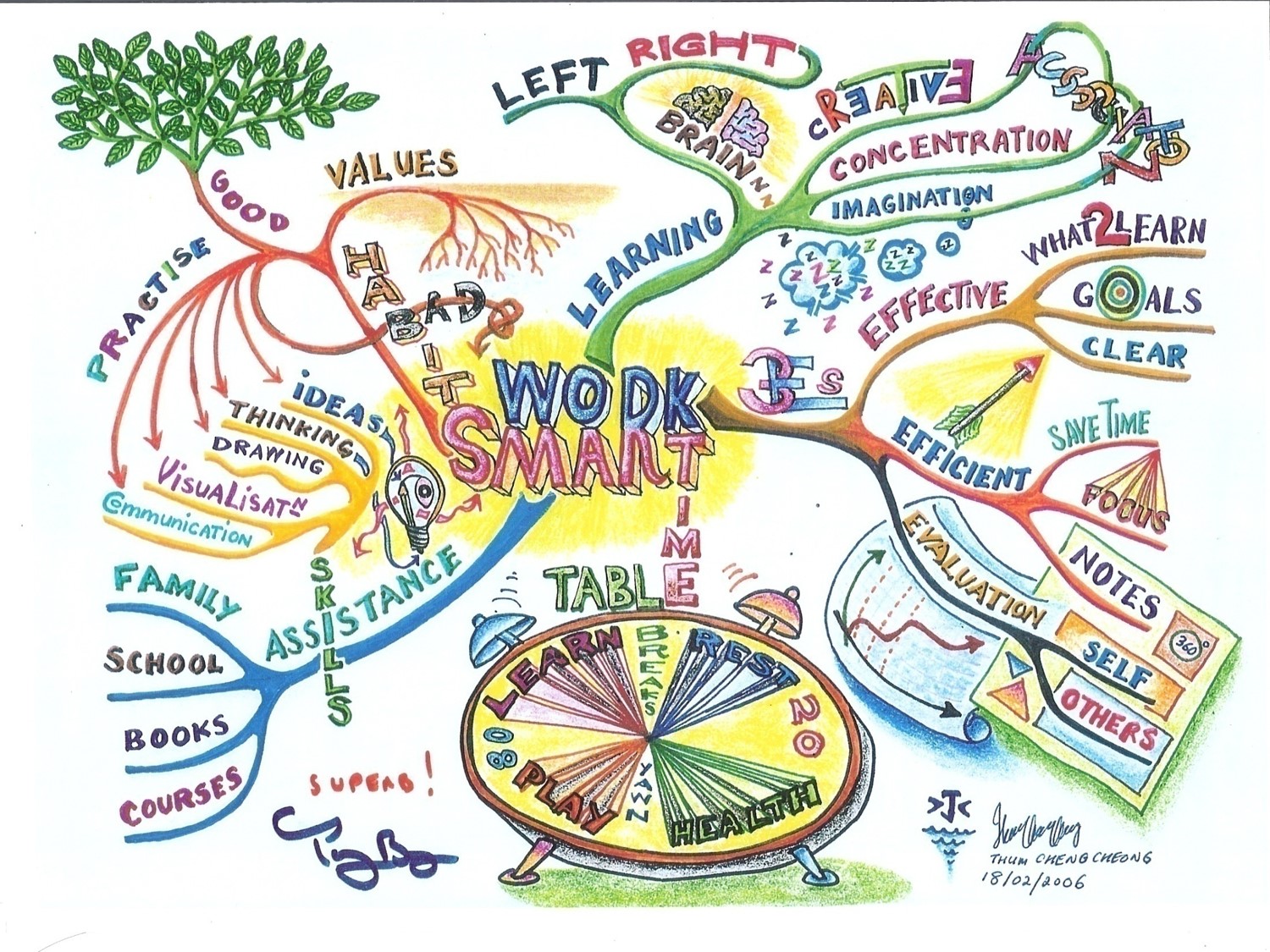Work Smart, Think Smarter!

Few would deny that the most valued asset of any organization is its people. Yet I have read annual reports that acknowledge this fact only to find companies announcing brutal downsizing at the first sign of financial pressure. Successful Brainsmart Leaders recognize the importance of thinking smarter as a gateway to effective decision making and hence leadership skills. They have the ability to identify leaders amongst leaders and encourage them to find new ways to do things better to improve productivity. Mind Map is a profound tool for effective Brainsmart Leaders.
Better Focus
Being pulled in different directions trying to meet organisation’s competing demands and priorities makes it challenging to focus without distractions. At times I find my thoughts straying and my thinking becomes foggy and lacks clarity. Mind Map helps to focus my mind as it requires me to drill deep into my thoughts to consider all the important factors and learn to prioritize them. It fosters a continuous stream of associations and connections, and before I know it, my thought process begins to flow almost effortlessly. At that point, my mind no longer thinks about the things that are irrelevant.
For example, when I have to prepare for a session plan for my lecture at the Singapore Institute of Management, I would first focus on the objectives, followed by the learning outcome that I want my students to achieve, then the key learning points, pace and timing. If I allow these ideas to float in my head without physically pinning them down on the branches, it will not help to solidify my focus and I will tend to procrastinate my projects & tasks at hand. After prioritizing the various tasks, I then decide what to work on next and allocate the amount of time accordingly. This serves as my teaching agenda and it also allows me to be flexible with the sequence when I lecture and conduct tutorials. Hence I am able to focus and be more productive.
More Organized
The true beauty is that Mind Maps can be applied in virtually any area of life, an instant power source anyone can easily tap into. For example, after familiarizing myself with the theory and practice of Mind Maps, I will use them as a system & structure to plan any task, such as a presentation or a review as it is easy for anyone to follow since everything falls on one page.
Leonardo da Vinci once said, “In this world, everything is connected to everything else.” This is so true. In my work and presentations, I can conveniently shift from one aspect of my topic to another with ease and my audience can visualize how all things connect and work together to arrive at the big picture (gestalt). My audience’s eyes would be fixated on the whiteboard as I reveal the course information through a network of colourful text, graphics and images connected by branches. I could edit the information quickly as the audience contributes their ideas and add new information during our interactive discussions.
This tool is also powerfully applied in all my meetings for recording and summarizing key ideas where irrelevant information just won’t fit into the Mind Map of what’s being discussed. Hence it is easy to prevent drift and waffle from the agenda at hand.
Inspire New Ideas
Brainsmart leaders realize the potential of their staff by harnessing their thinking power and tapping into their natural creative ability and Intellectual Capital, an asset assured of appreciating in value over time. Our brain needs to continually learn new information, be stimulated through our senses in order to remain vibrant and creative. One way is to encourage employees to continue their education and training that will enable them to exercise their brains and thinking. Mind maps can be used to organize and conceptualize thinking because it is simple to acquire yet powerful. The long-term performance of your organization will depend on how well leaders can manage the combined intelligence and creativity of their employees to constantly generate ideas and/or alternatives to problem solving, decision making and innovation.
Tony Buzan said, “When you are interested in everything, everything becomes more interesting.” Therefore we can become more interesting people and make it easier to connect, relate and make associations when interacting with others and our environment. Similarly, our brain is a truth-seeking device and acts on what it believes to be true so it seeks knowledge and information to make connections and associations constantly, without which, we will work to fill in the blanks, giving rise to assumptions, a dangerous ground for miscommunication. Mind maps have led me to greater clarity of thoughts and I now start to believe in myself more and hence am able to achieve more as a leader.
